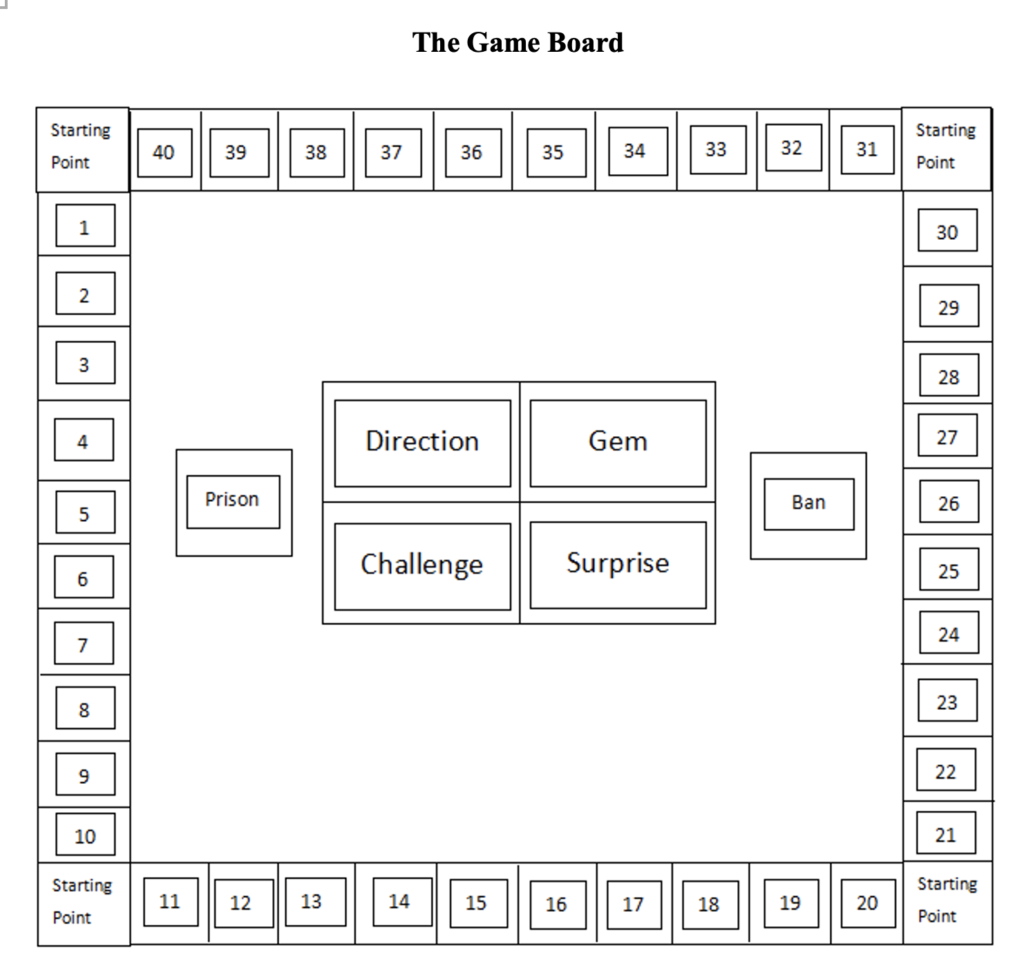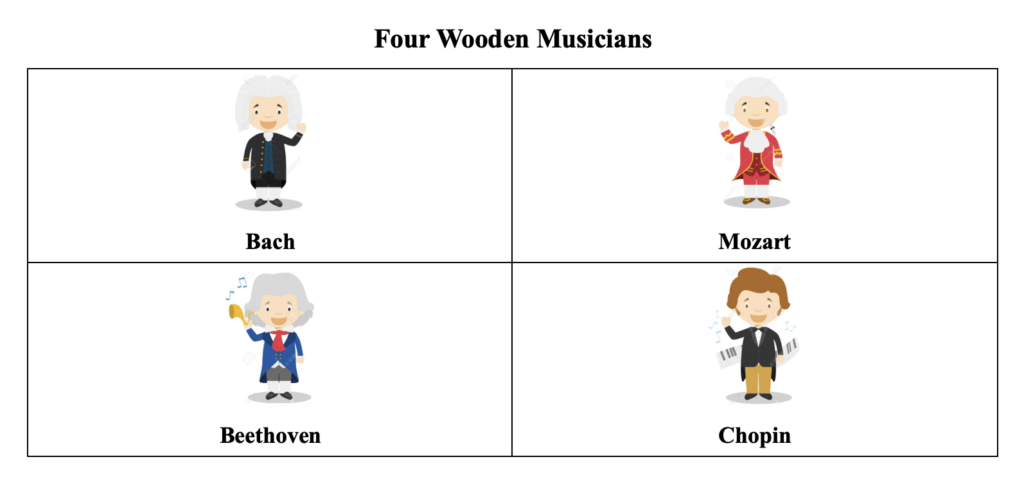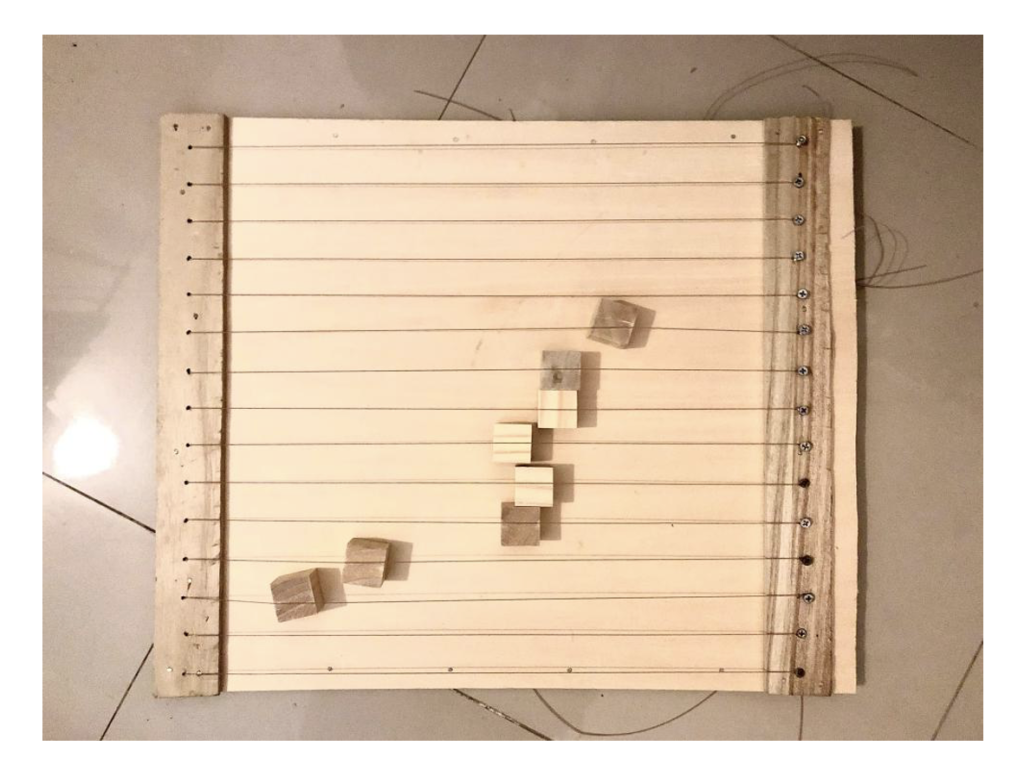I attended a class called Creativity in Music while pursuing my master’s degree in Hong Kong. In this lesson, I learned how to use sound, video, voice, speech, instrument creation, and body movement to generate musical creativity.
The first project was to make a children’s music game. I created a game called “Musical Gems.” The goal of this game is to provide children with a fun and educational experience while also allowing them to learn basic music theory.


The second project required me to develop a musical instrument. I created a Wooden Koto for this project. Guzheng, Koto, and Guitar all inspired the creation of this instrument. It is 55cm in length, 43cm in breadth, and 2.5cm in thickness. To create it, I used two flat wooden boards, two thin wooden flats, eight little wooden cubes, 15 guitar strings, nails, and screws.

The most challenging part of making this Wooden Koto was to find a way to hold the strings very tight. Putting on the left side of the strings was smooth because each guitar string has a small head with it, which will automatically cling to the back of the board once I hold the other end of the string tight. As for the right side of the strings, the first thought I came up with was to imitate the way people applied strings on the guitar. Unfortunately, I cannot find any small rounded stick to hold the strings, not to mention small wheel gear that fit the stick. Then I thought of using an eye bolt for each string, tight the string with the eye bolt then used a wrench to adjust the eye bolt. Nevertheless, that failed, too, because the string was not possible to tighten on the eye bot. Finally, I came up with a not very scientific but “works” way for me to tighten the strings. For each string, I used one screw to twirl the string on the hole I drilled before, while my father helped me to pull the string real hard on the back of the board. In this case, when I twirl the screw, the string will be automatically stuck in the hole.
The third project was to create a video on whatever subject I wanted. So I made “The Art of Quarantine,” a paper stop-motion video. The reasons I made this video, first and foremost, I enjoy watching stop-motion films and would like to attempt making one myself. The second reason is that I was confined to my house due to the COVID-19 quarantine, which making it difficult to record real-life materials. As a result, filming a stop-motion video of the subject of quarantine appeared to be a fantastic idea. The video’s materials were entirely paper pictures. So the first step was to go online and look for suitable photographs to download and print. Following that, I cut them. I only spent 3 hours shooting the movie but 3 days cutting the pictures, thus it was difficult labor that required a lot of patience. I filmed the video and edited it in a software called Stop Motion Studio. After that, it was finalized with music and sound effects.
This is so fascinating to read about and watch. I have tried to come up with easy instruments myself (using a tin can and rubber band), but never as complicated as you did. For me the struggle was also to tighten the strings and make them stay on the same note.
I also enjoy making stop motion videos too. It was so fun that you used people from famous paintings in the video, and what a clever title! The way the masks, gloves and hand sanitizers were added onto the characters were nice details. You work great with the music and sound effects. The music fits very well to the story and the theme you have chosen. Great job on the video!
Hi Katrine, I agree! Tightening the strings and making them stay in the same place was challenging!
And I’m glad you enjoyed my video 🙂
I love your movie. It was a creative mix of historical art and contemporary everyday challenges.
Thank you Anja 🙂
Gabby this is all so great thank you for sharing! I am so happy to learn about and see other areas of your creative exploration. I love it all! I think bringing some of these ideas to Lesvos could be great. We had a team make a fieldwork board game once that was wonderful.
Hi Dr. Gubner, I’d love to explore more creativities in music when we are in Lesvos. It’d be wonderful to work with people from different cultures and collaborate on projects together!